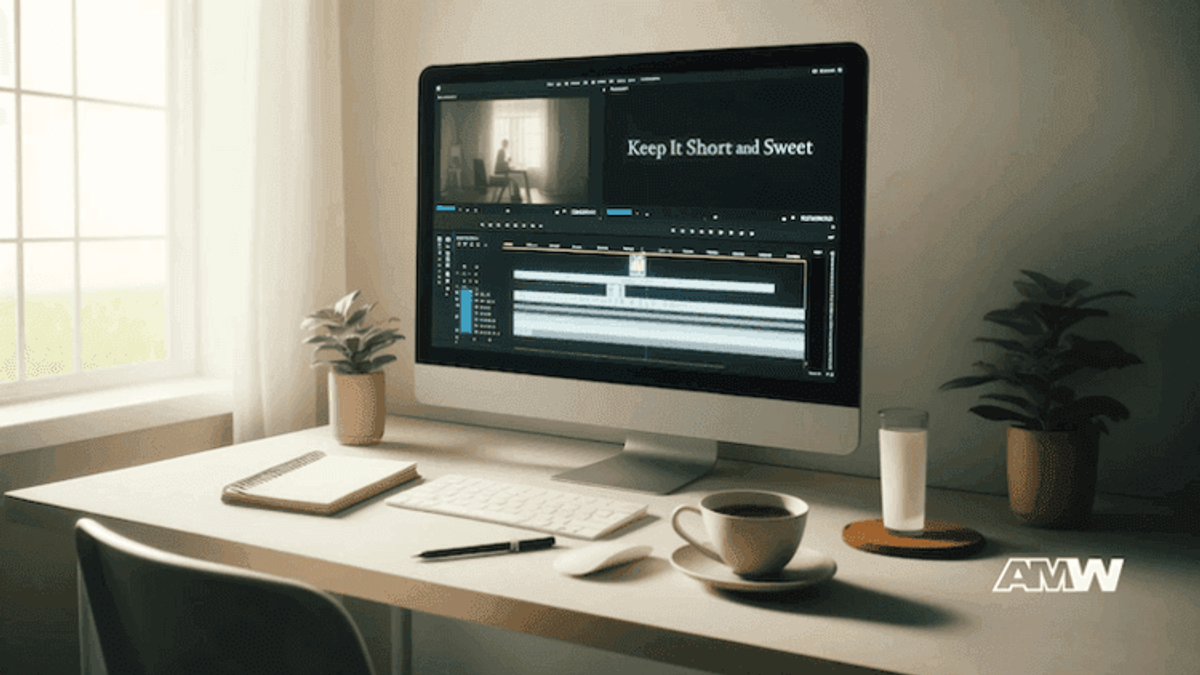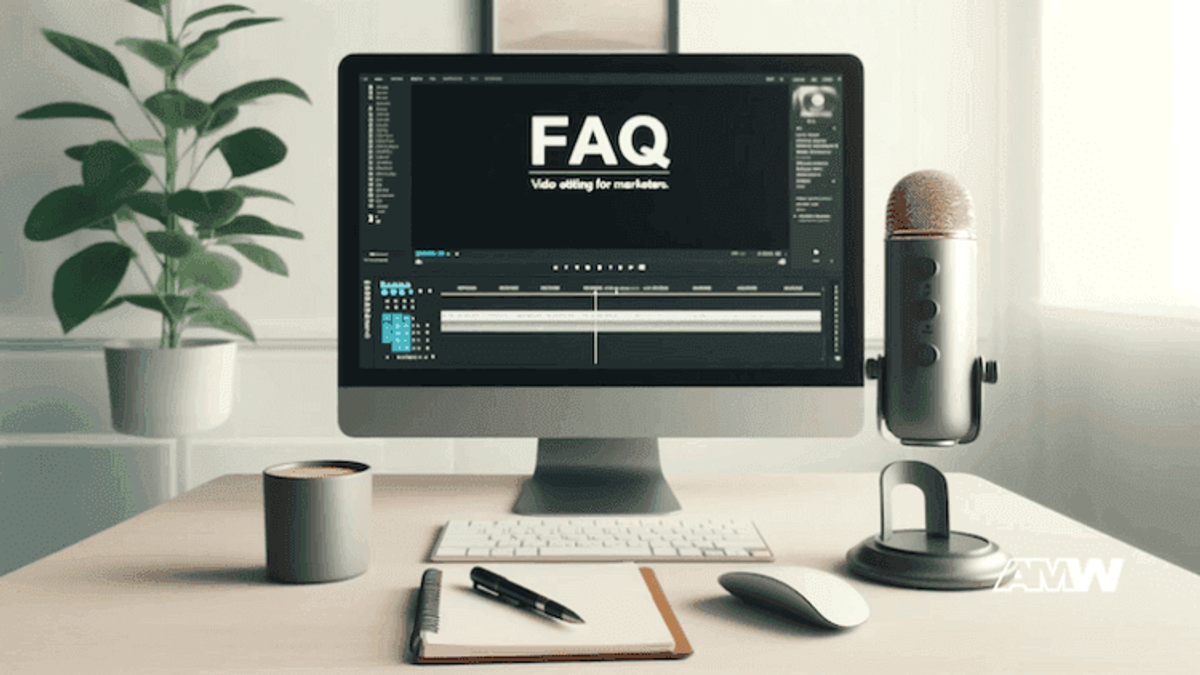The Essentials of Video Editing: Tips for Marketers

Once upon a time, in the bustling world of marketing, a brand's success was often tethered to the power of print and radio. However, a new hero emerged on the scene—video content. A small marketing team faced a big challenge in the heart of a vibrant city. Their product was innovative; their passion was palpable, but their video content? Not so much.
Quick Summary
A small marketing team discovered that to stand out in a visual-first culture, they needed more than just good footage; masterful video editing was essential. They learned the importance of clear planning, conciseness, and high-quality visuals in crafting effective video content. By leveraging storytelling techniques and utilizing the right tools, including professional software, they could create engaging narratives that resonate with audiences. Ultimately, this approach enhances the impact of
They then realized that to captivate their audience and outshine competitors; they needed more than just good footage; they needed masterful video editing.
This realization isn't unique to our fictional team. Across the globe, marketers are understanding that in today's visual-first culture, video editing isn't just about cutting scenes together. It's about storytelling, engaging, and converting viewers into customers.
Ready to Grow Your Business?
Get a free consultation and custom strategy tailored to your goals.
This blog aims to equip marketers with essential video editing tips that transform basic footage into compelling narratives.
Start with a Clear Plan

Tip: Before you dive into the technicalities of video editing, it's crucial to define the purpose of your video. What message do you want to convey? Are your goals to inform your audience about a new product, entertain them with creative content, persuade them with compelling arguments, or directly encourage purchases? This purpose will guide your entire editing process, influencing everything from the pacing to the choice of visuals. For instance, a video designed to sell a product should be dynamic and to the point to keep the audience engaged and motivated to act.
Example: Consider a hypothetical company in the beverage industry. They set out to produce a video promoting the sustainable aspects of their new product packaging. Knowing this, the video editor chose to highlight the product'sproduct's environmental benefits. They included shots of thriving forests and clean rivers to visually reinforce the message, thus making the sustainability aspect not just a feature but a visually impactful part of the narrative.
Keep It Short and Sweet

Tip: In digital media, viewer attention spans are shorter than ever. Make your videos concise and focused to keep your audience engaged from start to finish. A general guideline for most marketing videos is to keep them under two minutes. This duration is enough to convey a meaningful message but short enough to prevent viewer drop-off.
Example: A company faced a challenge with its initial cut of a tutorial video, which ran over ten minutes. Realizing the need to adapt to its audience's preferences, it edited the video to a brisk 90 seconds. It removed unnecessary content and streamlined the information to focus on key functionalities. This sharper, more direct video version improved user engagement significantly, as evidenced by higher retention rates and positive viewer feedback.
Prioritize High-Quality Visuals

Tip: The quality of your video can greatly influence how your message is perceived. High-resolution footage and professional-grade lighting are essential to creating a visually appealing experience. Poor-quality video can distract from your message and diminish the credibility of your brand. Investing in quality helps retain viewer attention and enhances the perceived value of what you're presenting.
Example: When a shop launched their online boutique, they knew that first impressions were critical. They invested in professional video production for their launch, focusing on high-quality visuals to showcase their apparel. The result was a series of striking videos that presented their clothing in the best light, leading to increased customer interest and significant improvements in sales conversions from their video marketing campaigns.
These elements—clear planning, conciseness, and quality—play a vital role in crafting effective video content that resonates with audiences and achieves marketing objectives.
Use the Power of Storytelling

Tip: Effective storytelling in video editing is not simply about putting together a sequence of clips but about creating a compelling narrative that connects with your audience. Each edit and transition should purposefully contribute to unfolding the story, guiding the viewer through a clear beginning, middle, and end. This structure keeps the audience engaged and leads them naturally towards a call to action, whether it's subscribing, purchasing, or simply learning more.
Example: Consider the approach a photo shop took in its recent marketing campaign. They utilized customer testimonials to build a narrative arc. The video introduces the viewers to real customers who initially faced specific challenges. It then transitions into how the products made a significant difference, concluding with customer reflections on their improved circumstances. This storytelling method effectively illustrates the product's impact and drives home the message of transformation, encouraging viewers to imagine how they, too, could benefit.
Ready to Grow Your Business?
Get a free consultation and custom strategy tailored to your goals.
Leverage the Right Tools

Tip: The quality of your video heavily depends on the tools you use. Professional editing software like Adobe Premiere Pro, Final Cut Pro, or DaVinci Resolve offers robust features that can significantly enhance your video's appeal. These tools provide capabilities for detailed color correction, advanced sound editing, sophisticated visual effects, and seamless transitions that can transform a basic video into a professional-looking piece of content.
Example: A company specializing in event solutions, opted to use DaVinci Resolve for their instructional videos. They incorporated dynamic text overlays and fluid transitions that helped clarify the use of their complex software for new users. By utilizing these advanced editing tools, the company produced clear, engaging, and educational content that made the learning curve for their product much more approachable for customers, thereby enhancing user experience.
Storytelling and the right technological tools are essential in crafting videos that are watched, effectively conveying the intended message and encouraging viewer action. When implemented correctly, these strategies can elevate your content and ensure it makes a lasting impact on your target audience.
Don't Forget About the Sound

Tip: The auditory elements of your video play a critical role in how viewers receive and retain your message. High-quality sound can significantly elevate the perceived professionalism of your content. It is essential to use clear, crisp voice-overs and to carefully select background music that complements rather than competes with the spoken content. Additionally, ensure that background noises are minimized to avoid distractions that detract from the main message.
Conclusion

Video marketing is vast and filled with opportunities for those who master the nuances of video production, including sophisticated editing techniques.
By integrating strong visuals with impactful sound and weaving compelling narratives, marketers can create videos that capture attention and resonate deeply with audiences. This skill set is increasingly essential in a competitive digital marketplace where distinguishing your brand content from others can determine your success. In today's world, a well-crafted video is a powerful tool to cut through the clutter and engage viewers.
Whether for a budding startup or a well-established corporation, the ability to produce high-quality video content is invaluable. Remember, in this age of endless digital noise, a finely edited video stands out, delivering your message effectively and making a memorable impact on your audience.
FAQ

What is the best video editing software for beginners?
Software like Adobe Premiere Rush or Apple iMovie offers a user-friendly interface with sufficient features to start basic editing. These intuitive programs provide essential tools such as cutting, transitions, and simple effects that are perfect for marketers new to video editing.
How important is maintaining a consistent style in marketing videos?
Ready to Grow Your Business?
Get a free consultation and custom strategy tailored to your goals.
Very important. Consistency in style, such as using specific color schemes, fonts, and transitions, helps establish brand identity and can make your content instantly recognizable to your audience. This consistency enhances the overall impact of your marketing efforts.
Can effective video editing increase engagement?
Absolutely. Well-edited videos are more engaging and can keep viewers watching longer, which is critical in a digital environment where attention is scarce. By ensuring your videos are concise, visually appealing, and narratively compelling, you significantly increase the chances of viewers watching them through to the end and taking action.
How often should I include calls to action (CTA) in marketing videos?
While including a CTA is essential, it should be used judiciously. Typically, a CTA at the end of the video works well, directing viewers after they have received all the information. However, a mid-video reminder can also be effective in longer videos, especially if it's subtly integrated.
What are some common video editing mistakes marketers should avoid?
Common mistakes include overusing effects, which can distract from the message, neglecting audio quality, and failing to align the video content with the marketing goals. It's also a mistake to use too long intros or not optimize video content for different platforms (e.g., horizontal for YouTube, vertical for Instagram Stories).
Should we film our footage or use stock videos?
While original footage can give your videos a unique and authentic feel, stock videos are a practical and cost-effective alternative, especially for smaller teams or those on a tight budget. If chosen carefully and edited creatively, stock videos can still offer a personalized feel to your video content.
How can I measure the success of my video content?
Success can be measured through various analytics such as view count, watch time, engagement rate (likes, comments, shares), and conversion metrics (how many viewers completed a CTA). Most video hosting platforms provide these analytics to help you improve future video content.
Ready to Grow Your Business?
Get a free consultation and custom strategy tailored to your goals.